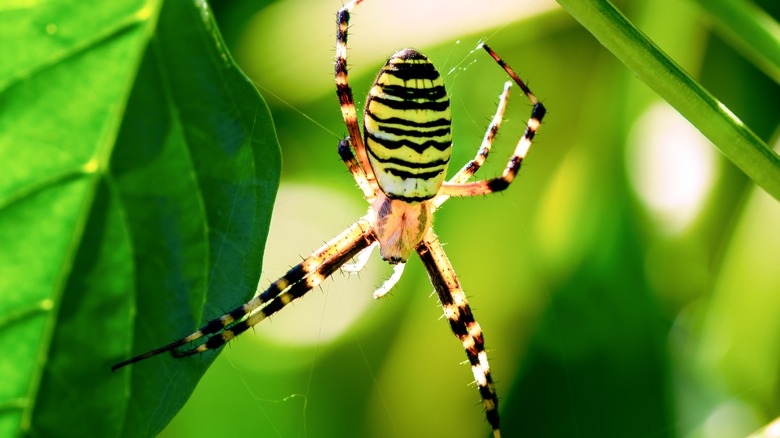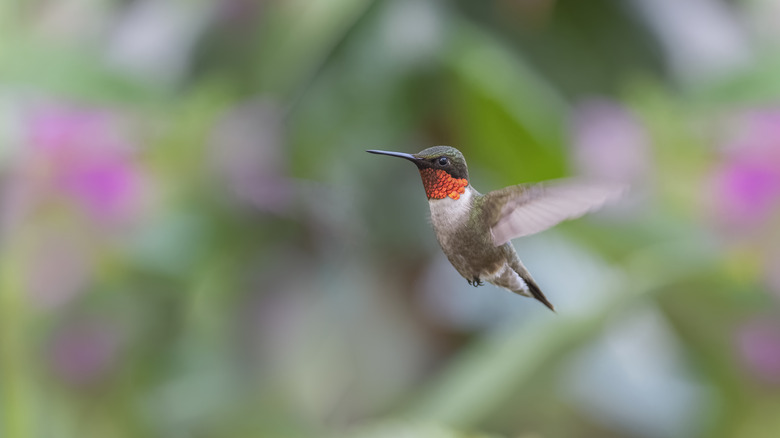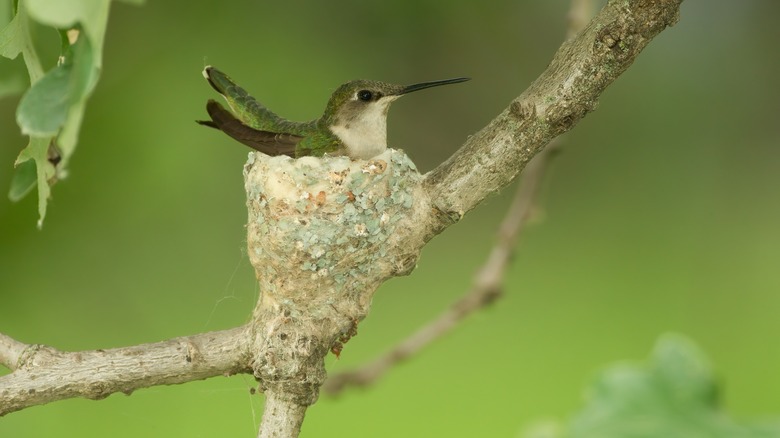Attract This Spider-Eating Hummingbird To Your Yard For Natural Pest Control
Hummingbirds are some of the most whimsical, wondrous creatures you can attract to your yard. These tiny birds don't just look adorable and make a one-of-a-kind humming noise with their fast-moving wings; they also remember each location they visit and how long specific food sources take to replenish. Once you establish your yard as a safe space with plentiful food and water, your hummingbird visitors will return again and again. But, did you know that these joyful birds also offer the benefit of spider control?
Ruby-throated hummingbirds — the most common type of hummingbird in the central and Eastern United States and Canada — are known to feed on insects as well as nectar. In addition to eating spiders, these hummingbirds also use their webs as nesting material. If you have a spider problem around your home and yard, taking the steps necessary to attract more ruby-throated hummingbirds to the area can naturally cut down on the presence of these creepy crawlies. As a bonus, you'll be helping to fuel everyone's favorite bird at the same time.
Building blocks of a ruby-throated hummingbird's diet
Ruby-throated hummingbirds are known for their love of nectar. This is why so many bird lovers put out homemade hummingbird nectar in feeders just for them. However, you may be shocked to learn that the majority of their natural diet is actually made up of fats and proteins from insects. In addition to spiders, these hummingbirds eat a wide variety of flying insects like flies, mosquitos, and gnats. They are also known to feed on plant pests like aphids, beetles, and caterpillars.
If you want to make the transition from occasionally enjoying a passing hummingbird at your feeder to encouraging these birds to move into your yard, you'll need to ensure that insects and spiders are available as a food source. The easiest way to do this is to plant small native flowers that attract insects (and therefore both hummingbirds and spiders that eat insects). Ironweed, goldenrod, buttonbush, yarrow, and coneflowers are all excellent additions to your yard, if you're aiming to attract a long-term ruby-throated hummingbird population. Of course, you can start by releasing the spiders you find in your house outside into your yard for hummingbirds to eat (in addition to all the other reasons why you shouldn't kill spiders in your home).
Encouraging ruby-throated hummingbirds to nest in your yard
If you'd like to have live-in hummingbirds at your disposal for insect control, you'll need to make your yard attractive for more than just a bite to eat. Encouraging hummingbirds to nest in a particular area, however, can be a bit challenging. These birds aren't cavity dwellers like many common songbirds, so they won't simply settle into a hole in a tree trunk or move into a manmade birdhouse.
Hummingbirds are cup nesters, meaning they build their cup-shaped nests high up in the forks of tree branches shielded by leaves. They build these tiny flexible nests using materials like dandelion fluff and spiderweb silk. Spiderweb silk is especially important for adhering the nest to its base. If you'd like to increase the likelihood of ruby-throated hummingbirds nesting in your yard and feasting on your spiders, try to provide these and similar materials for them to build their nests with. You can even build or buy a hummingbird nest box and attach the materials to the box with wire mesh for easy access.


